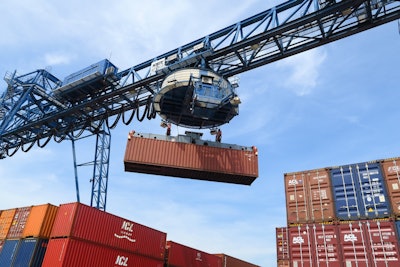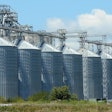
The Port of Oakland is set to launch an interagency effort to improve the flow of agriculture exports at the port.
The program involves the use of additional yard space and equipment, restored export ship calls and assistance to export users. The goal is to provide relief to agricultural exporters who are facing shortages of export capacity and skyrocketing logistics costs.
The port will open and operate a 25-acre off-terminal, paved container yard equipped to move containers off chassis and store them for rapid pick-up. The yard will provide access to equipment and provide faster truck turns without having to wait for in-terminal space. Agriculture exporters will be assisted by federal and state agricultural agencies to use the yard.
The Port of Oakland is said to be the preferred export gateway for much of California’s agricultural exporters and for refrigerated proteins. Under normal circumstances, the cargo volume at the port is approximately 50% exports and 50% imports providing a match between inbound cargo and emptied containers for exports.
The current import surge clogging up the ports, however, is displacing ships and containers that are available to exporters, especially shipments of farm goods. The port saw significant drops in export volume due to skipped sailings of crucial export lines and lack of equipment for export cargo.
The situation was the catalyst for a convening of state and port officials with farm producers and transportation executives to solve a year-old shipping crisis.
At stake was the state’s multi-billion-dollar agriculture export industry.
The meeting was led by the Governor’s Office of Business and Economic Development Director Dee Dee Myers, State Transportation Agency Secretary David S. Kim and California Department of Food and Agriculture Secretary Karen Ross.
Participants included seaport stakeholders within the broad and varied agricultural commodity sectors, freight forwarders, trucking and warehousing operators. The meeting resulted in a list of potential solutions to unclog the supply chain for agriculture exports.
“We need the shipping companies to immediately restore the export lines from Oakland to Southeast Asia and the Indian subcontinent,” says Bryan Brandes, Port of Oakland Maritime Director.
“In the meantime, the Port -- along with our federal and state partners -- is ready to do everything we can to help provide room and relief to help our agricultural customers,” says Danny Wan, the Port Executive director.
拜登管理端口特使很大facilitated frequent discussions with agricultural exporters, shipping lines and the Port of Oakland to lend federal support.
The discussions have focused on both short-term and long-term solutions to support American agricultural exporters. Long terms solutions include:
- Asset management including availability of containers and the chassis used to transport them over the road
- Port and inland port operations, including off-dock container yards
- Long-term supply chain strategies and increased investment in critical port infrastructure





















